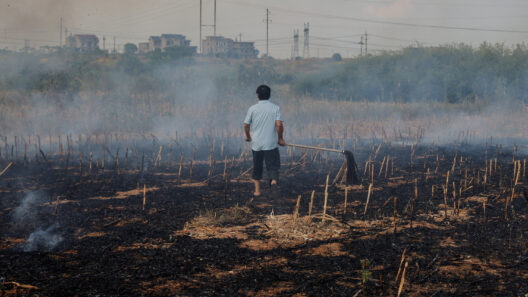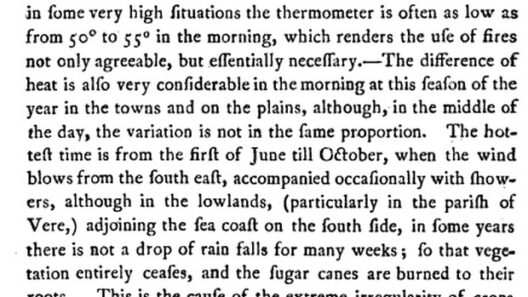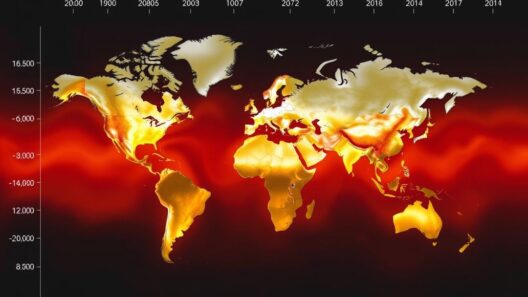The climate of Britain has often been enveloped in a tapestry of myths and folklore, particularly when it comes to fog—a weather phenomenon that has captured the imagination of writers, artists, and the general populace alike. Yet, beneath this romanticized veil lies an intricate web of meteorological realities that paint a more nuanced picture of Britain’s atmospheric conditions. Understanding the complexities of Britain’s climate demands an exploration that traverses through historical precedent, contemporary observations, and future prognostications.
Historically, fog has been synonymous with Britain, contributing to an evocative sense of place. From the cobbled streets of London shrouded in a cloak of mist to the rolling hills of the English countryside, fog has morphed into a symbol of the nation’s identity. It serves as a metaphorical fog, obscuring the perception of British weather while simultaneously enriching it with layers of narrative. The term “fog” itself conjures images that are not merely physical but reflective of cultural ethos—mysterious and poetic, yet often misconstrued.
When delving into the factual realm, however, it becomes necessary to dissect these myths. One of the most pervasive misconceptions is that Britain is perpetually engulfed in fog. In reality, the nation’s climatic tapestry is woven from a variety of meteorological threads, predominantly featuring temperate maritime conditions. This moderate climate, influenced by the Atlantic Ocean, leads to a diverse array of weather patterns that can change with little forewarning.
Indeed, fog forms under specific atmospheric conditions—typically when moist air cools rapidly, condensing water vapor into minute droplets that float lazily, often reducing visibility to a mere few meters. While fog is most prevalent in late autumn and winter, specifically during the transition periods from warm to cooler temperatures, it is by no means the dominant climatic feature throughout the year. Data shows that instances of dense fog are relatively infrequent, accounting for a modest fraction of Britain’s annual weather profile.
Moreover, the connection between fog and pollution is increasingly pertinent as urban areas expand. Historical accounts of “smog,” particularly during the mid-20th century, often conflated fog with smoke—a noxious blend that claimed lives and tarnished cities. The infamous Great Smog of London in 1952, for instance, served as a chilling reminder of how industrial progress could be eclipsed by health crises induced by environmental negligence. This intertwining of fog and pollution launched a movement towards cleaner air standards, illustrating the necessity of robust environmental legislation while cautioning against anthropogenic factors that can exacerbate natural phenomena.
As climate change accelerates, the characteristics of fog itself are anticipated to shift. Warmer global temperatures may alter precipitation patterns, changing the frequency and duration of fog events. Interestingly, some climate models suggest that while fog occurrences may decrease overall, the fog that does materialize could become more intense due to heightened humidity levels. This paradox offers an intriguing juxtaposition—a phenomenon that paradoxically represents both clarity and obscurity, light and shade, certainty and uncertainty.
Analysis of Britain’s microclimates reveals how geography intricately influences weather patterns. Coastal areas, such as Cornwall and the Isle of Man, experience different climatic realities than the inland regions. These locations become features of their own, often yielding dense sea fog, which becomes a frequent companion, particularly during warmer months when the cooler sea air meets the heat of land. The coastal humidity coupled with land temperatures creates atmospheric encounters that reimagine the concept of fog, transforming it from an ephemeral veil into an integral component of coastal scenery.
Furthermore, the interplay between topography and fog formation elucidates the natural environment’s complexity. The valleys and hills of the English countryside become traps for icy mists, creating surreal landscapes that inspire awe. As dawn breaks, the gaseous suspension lifts, revealing the emerald greens of the landscape, reminiscent of a painting unfolding layer by layer. Such transformations are a reminder of nature’s artistry—an ephemeral beauty grounded in the cyclical patterns of weather.
Yet, overlooking the ecological significance of fog would be a grave error. Fog acts as a vital replenisher for ecosystems, particularly in drier regions. In some areas of Britain, it contributes significantly to groundwater supplies, nourishing flora and fauna that depend on this moisture. This symbiotic relationship between climate and biodiversity underscores the importance of sustaining natural resources while highlighting the delicate balance within ecosystems that climate change threatens.
In conclusion, the climate of Britain encapsulates a rich chronicle of interaction between myth and reality. While fog possesses an alluring allure, the true narrative lies in understanding its formation, significance, and the shifting dynamics due to changing climates. As an essential component of Britain’s atmospheric landscape, fog not only shapes our environment but also serves as a poignant reminder of the interconnectedness between human activity and climatic phenomena. Addressing climate change is not merely an ecological necessity but a moral imperative, challenging us to rethink our relationship with the natural world to ensure that fog—much like our collective future—remains an enigmatic, vital chapter in Britain’s climate story.








